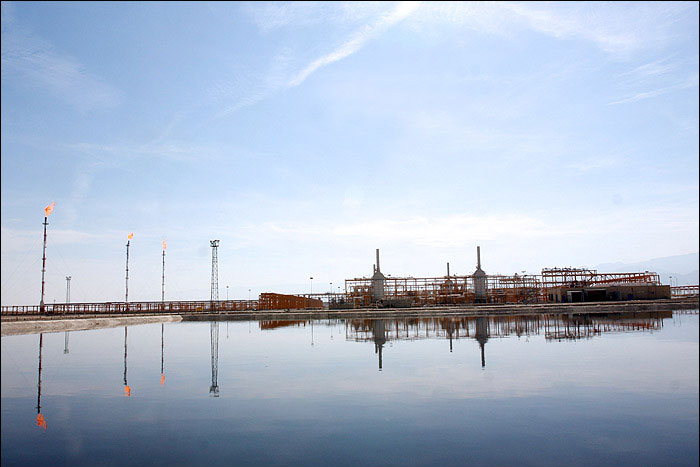Falling in crude (oil or gas condensate) prices which happened recently, has different profitability at the same time in the refining companies. Refiners not been expressing a decline in revenue and some refinery margins have significantly improved. The impact of the changes in crude prices on the economics of refineries is considered throughout this report.
In order to have more accurate data, a dynamic economic and financial model for a gas condensate refinery has been developed. The production of a condensate refinery include LPG, naphtha, and kerosene and gas oil.
In order to eliminate the fluctuations in the feed and products prices that occurs in the recent years, it was decided to use the average prices of feed and products for the seven years from 2010 - 2016. The results show that the internal rate of return (IRR) of refinery is equal to 19.7% and the refining margin is equal to 7.5 $ per barrel (Note that a five-percent discount is considered for the condensate feed prices based on government’s support of refineries).
The Impact of Crude Prices on the Economics of Refineries
The refining margin is the difference between the wholesale values of a refinery produces and the value of the crude from which they were refined.
Economics of the oil and gas refineries is most sensitive to margin. Hence, feed and product prices are the important parameters which can influence on economic of refineries. In other words, in comparison with refining margin, fixed investment cost has less impact on economic of oil and gas industries. For example, by 20% increasing the fix investment cost of mentioned refinery from 300 to 360 MMUS$, the IRR decline by 12% (from 19.7% to 17.5%).
Regional refining margins are shown as follow. In mid-2014, we have seen a 50% dramatic fall in crude oil prices from USD 112/bbl in June 2014 to USD 48/bbl in January 2015. However, in some regions, specifically Europe and Asia refinery’s margin has clearly improved. But North American margins have fallen sharply. (For more information go to: Impact of low crude prices on refining, McKinsey Company, February 2015)

Generally, when the crude prices increased, the products prices such as gasoline rising simultaneously. However, there is a different approach in reducing the crude prices. As an example, although in mid-2014, we have seen a dramatic fall in the crude oil prices, refiners have generally not been reporting a sharp decrease in earnings.
In order to investigate the impact of feed and product prices on economic of refinery, the average of FOB Persian Gulf prices for different years used to achieve more actual results.
The average of feed and products prices (FOB Persian Gulf)
|
|
Condensate ($/bbl) |
Naphtha ($/mt) |
Gas oil ($/bbl) |
Kerosene ($/bbl) |
Refining Margin |
IRR |
|
Ave. 2010 - 2016 |
84.7 |
731.8 |
100.2 |
99.2 |
7.5 |
19.7 % |
|
Ave. 2015 |
50.7 |
452.0 |
63.1 |
62.5 |
6.3 |
18.1 % |
|
Ave. 2016 (First Half) |
33.7 |
352.8 |
46.0 |
46.4 |
5.7 |
16.4 % |
The results show that by falling the crude prices by 60% (from 84.7 to 33.7 $/bbl), the internal rate of return (IRR) of refinery will not be reduced in the same proportion (reduced by 17%), i.e., the economics of refineries is not related to the oil prices. It is also more related to the refining margin.
On the other hand, daily prices changes show that product prices tend to profitable change by fluctuation in crude prices, e.g., when crude oil prices reduce by 1.9% from 6 - 7 December 2017, Naphtha prices reduce by only 1.0%, and that means earning a great margin and profit for refinery owners on this day.
Another example is for 2 - 3 November 2017, when the oil prices increases by 0.7%, and Naphtha prices rising by 1.7% (1% more). i.e., earning a high profits for refinery owners on this day.
Therefore, refiners often gained benefit from sudden fluctuations in crude prices. They mostly benefit from both abrupt rise and decrease in feed prices.
The results showed that although most believe that dropping crude oil prices lead to economic losses of refineries, generally, this is not true. In most times, by reducing the crude prices, the products prices fall, but not in a same proportion. This approach is valid for raising of the crude prices. Hence, the refining margin can improve as well, and refinery owners will gain a high profit at the time of the initial fluctuations in oil prices.
Reza Hosseini
Energy Economics Expert[*]


Your Comment